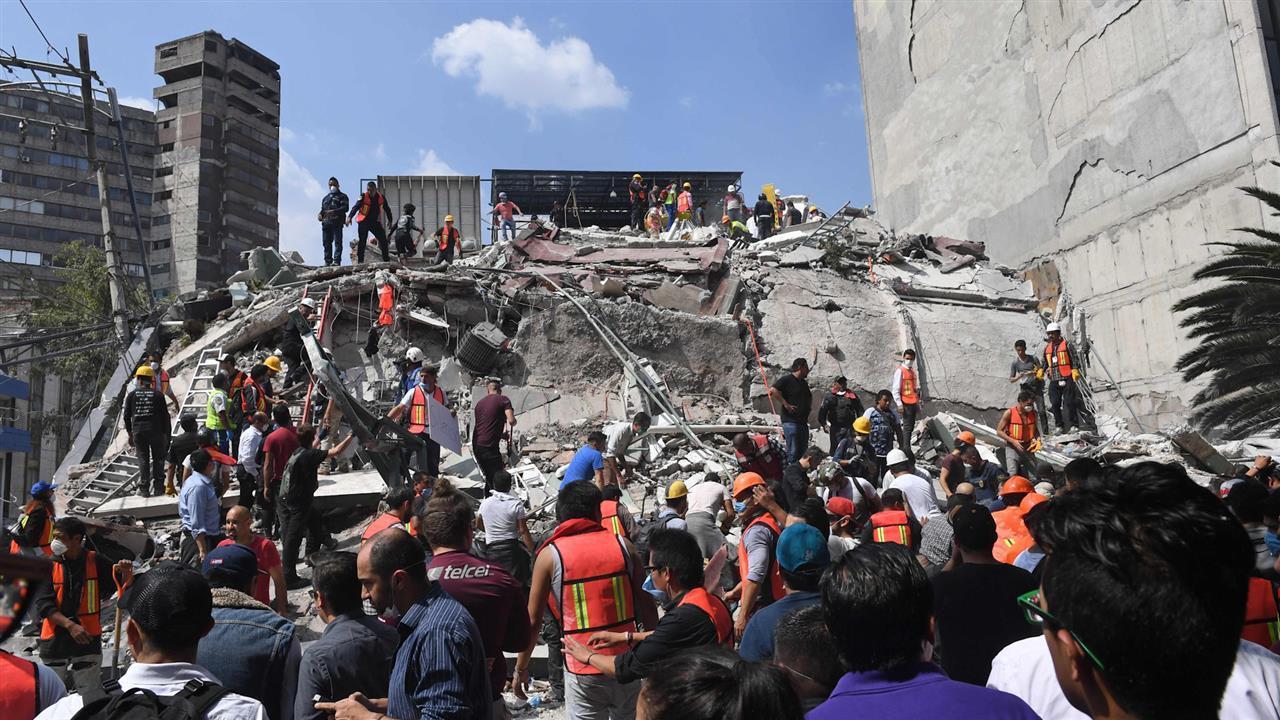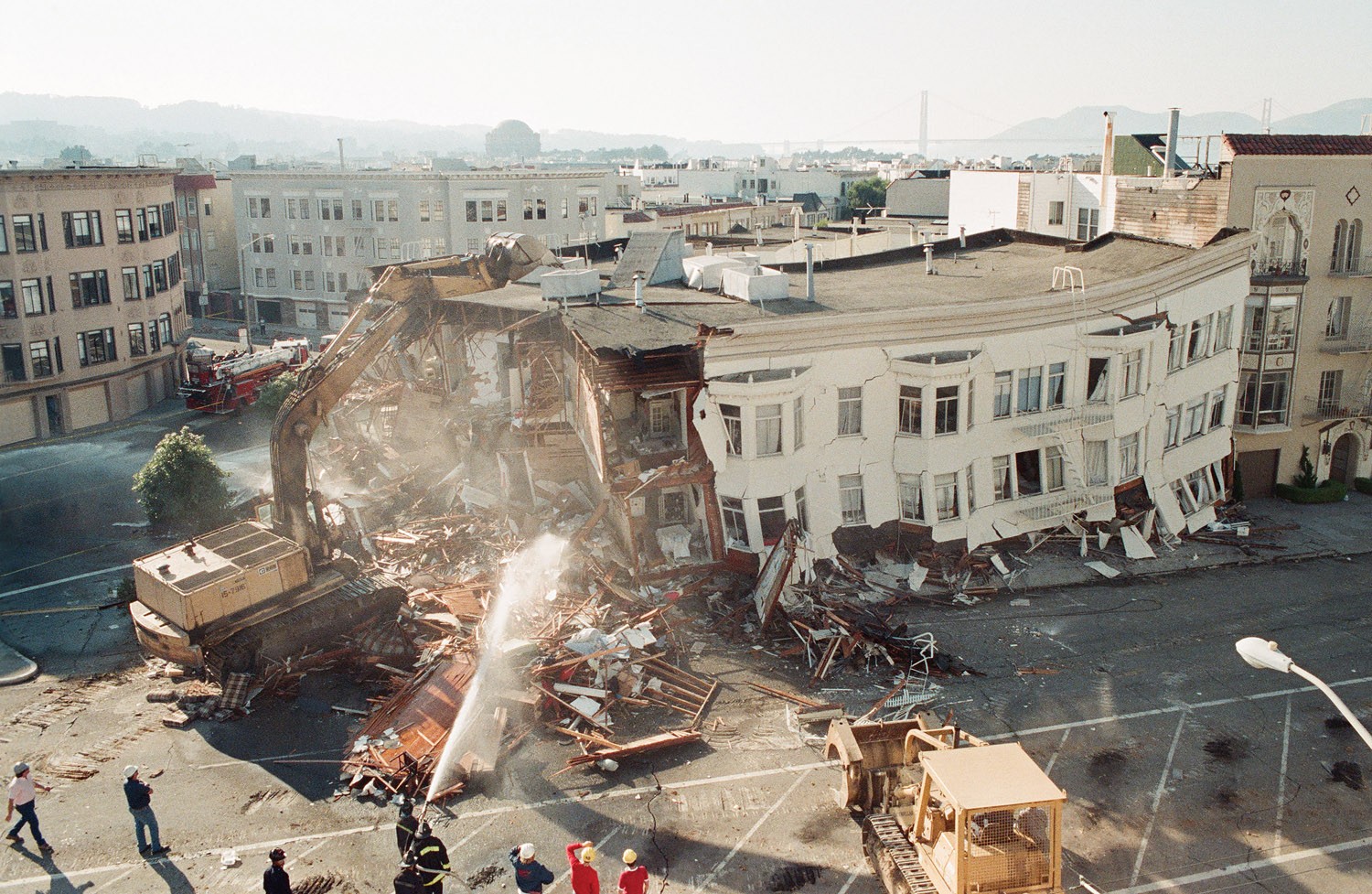By David Jacobson and Ross Stein, Temblor

Over 40 buildings collapsed in Mexico City during the M=7.1 Puebla earthquake on September 19th, killing 369 people. In the quake’s wake, engineers and scientists went out through the city to examine the buildings that fell. Now, a preliminary report has been released by earthquake engineers at Stanford University, with a very clear message:
Almost all the buildings that fell were built before the 1985 earthquake, and should have been retrofit or condemned long ago

The report, by Francisco Galvis, Eduardo Miranda, Pablo Heresi, Héctor Dávalos and José Ramón Silos from the John A. Blume Earthquake Engineering Center at Stanford, found that of the 46 collapsed structures, most were made of reinforced concrete (ribbed steel rebar encased in concrete), and 57% had a ‘soft first story’ (a weak ground floor that lacks enough resistance to the shear forces an earthquake). In 1985, a M=8.0 earthquake struck coastal Mexico, resulting in numerous building collapses and over 5,000 fatalities in Mexico City. The shocking toll of this distant earthquake prompted the country to strengthen its seismic codes for new construction. But, sadly, these changes will not be fully implemented until 2017. Also, the weaker buildings in the city remained. These structures pose a great risk to their inhabitants, and unfortunately, many of them came down over a 15 second span on September 19. In the figure below, the construction type of all collapsed buildings is shown, highlighting the danger of both inadequately reinforced concrete, and unreinforced masonry (stone buildings without any rebar at all).

While it comes as no surprise that older structures collapsed in the Puebla earthquake, the cause of the collapse, failure of columns (the vertical skeleton of buildings), was identical to 1985. This implicates inadequate retrofitting strategies or implementation, or the absence of structural evaluations. So, while the improved seismic codes implemented in 1987 greatly benefitted the country, and likely prevented more buildings from collapsing, the expensive but vital work to strengthen the city for the next quake fell short.
Stanford Prof. Eduardo Miranda told us, “I wish people would seismically upgrade their risky buildings as eagerly as they upgrade their smart phones. We often move too slowly to issue the retrofit ordinances, and then with time frames given to owners for evaluations and retrofits too long, when, in fact, many people are sitting on “ticking time bombs.”
Mexico City is not alone
Mexico City amplifies any seismic shaking by a factor of at least ten, and so is almost pathologically situated to take a beating in every quake. But, despite this, Mexico City does not stand alone. In California cities like San Francisco, Oakland, Santa Monica and Los Angeles, there are thousands of old buildings, many with soft first stories, inadequate reinforcing, or no reinforcing at all. And, if the 1989 Loma Prieta and 1994 Northridge earthquakes can foretell of how these structures will fare in a large quake, the answer is—not well. But these cities, plus a growing cohort of others, are implemented wise and warranted mandatory retrofit programs. While this is a start, things need to accelerate and expand. First, in some of these programs the building owner may be given 20 years in which they have to retrofit the structure. This is far too long, and state policymakers should strive to reduce the time granted to owners, while providing low-interest loans to make this financially possible. Furthermore, it cannot just be a few cities that require buildings be safe, it must be the entire state.

Buildings at risk of collapse must be strengthened
Dr. Lucy Jones (Dr. Lucy Jones Center for Science and Society) led Los Angeles’ pathbreaking retrofit program for Mayor Eric Garcetti. She told us, “We are seeing in Mexico City the reality repeated in so many earthquakes. Knowing that a type of building is dangerous, and even changing the building code to stop construction of that dangerous building, does not make the existing structures disappear. Your building is only as good as the building code in place—and enforced—when the building was built. This is why Los Angeles, San Francisco, Santa Monica and other cities are passing laws to require retrofitting of building types known to be dangerous.”

We are all Mexico City. We should act.
Reference
Francisco Galvis, Eduardo Miranda, Pablo Heresi, Héctor Dávalos and José Ramón Silos, Preliminary Statistics of Collapsed Buildings in Mexico City in the September 19, 2017 Puebla-Morelos Earthquake
- Earthquake science illuminates landslide behavior - June 13, 2025
- Destruction and Transformation: Lessons learned from the 2015 Gorkha, Nepal, earthquake - April 25, 2025
- Knock, knock, knocking on your door – the Julian earthquake in southern California issues reminder to be prepared - April 24, 2025
